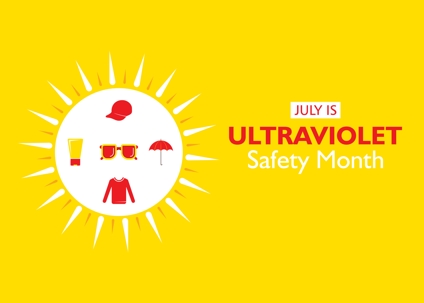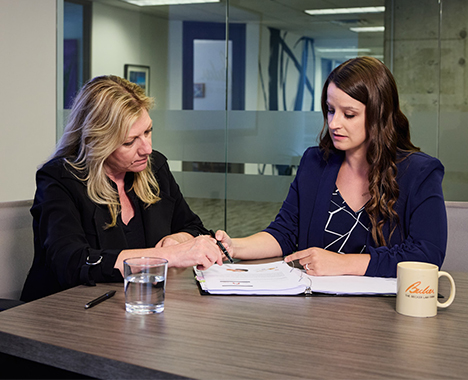Schedule a Consultation
216-621-3000Schedule a Consultation
216-621-3000
Summer has arrived and that means more time outdoors. However, while the season brings fun and plenty to do, it is important to remember the importance of protecting your skin and eyes from the damaging effects of the sun. As part of UV Safety Awareness Month, The Becker Law Firm is helping spread the word about ways to protect against the sun and prevent skin cancer.
According to the U.S. CDC, skin cancer is the most commonly diagnosed cancer in the U.S. Even though most cases are preventable, statistics show rates of skin cancer, including melanoma, are on the rise across the country and the world.
The Surgeon General’s Call to Action to Prevent Skin Cancer provides a wealth of information about skin cancer as a major public health problem, as well as ways to reduce risks. Here are a few important facts:
Avoiding the sun and UV rays is neither realistic nor recommended. Because spending time outdoors has many positive physical and mental health benefits, protecting your skin is more about reducing intentional UV exposure and increasing sun protection rather than avoiding the sun altogether.
UV exposure may be dangerous, but it is the most preventable cause of skin cancer. Here are a few tips to help you protect your skin and reduce your risks of skin cancer:
Clothing, hats, and sunglasses are far more effective barriers against the sun’s UV rays than sunscreen, and their protection doesn’t wear off. Because more coverage means better sun protection, you can choose fabrics with sun-protective qualities that still provide breathability.
For example, some clothes may have a UPF label. UPF, or ultraviolet protection factor, indicates what fraction of UV rays penetrate the fabric. A shirt labeled UPF 50 means just 1/50th of UV radiation reaches your skin. While clothes are great sun protection, it’s still important to use sunscreen for exposed skin.
When outdoors, consider shade your refuge, especially during peak hours of sun intensity (10:00am – 4:00 pm). To reduce exposure, walk in shadier paths, sit under awnings, or find a shady spot under trees.
Though it helps, shade is not a perfect shield. Some UV rays will still reach your skin, whether by passing through branches or leaves, or reflecting off water, glass, or concrete.
Sunscreens are widely available, but with many formulations and delivery methods, it can take some trial and error to find the type you like. Whether it’s a spray, a stick, or a traditional cream, the best sunscreen is the one you use every day.
As you search for your favorite sunscreen product, keep the following in mind:
Experts recommend keeping infants out of the sun for the first six months, and using clothing, hats, sunglasses, and stroller shades to shield against the sun rather than using sunscreen on their sensitive skin. Be sure any caregivers who watch your children apply and re-apply sunscreen if they’re going outside.
Glass blocks UVB rays well, but UVA rays can still pass through. Though vehicle windshields are typically treated to protect drivers against most UVA rays, side, back, and sunroof windows usually aren’t. To protect against these rays in your home or your car, you can have UV-protective window film applied.
Tanning has become very popular, but indoor tanning is associated with significant risks of skin cancer, including melanoma. It’s also especially dangerous for young people. The best approach is to avoid indoor tanning and ensure your kids don’t have restricted access to indoor tanning devices.
In addition to taking precautionary measures to protect your skin, the Skin Cancer Foundation recommends monthly self-exams to spot skin cancer in its early and most treatable stages.
The Becker Law Firm is a Civil Trial Practice that’s secured record results and millions in compensation for victims of medical malpractice. That includes victims and families who suffered as a result of a medical professional’s failure to diagnose cancer.
Though skin cancer is common and treatable, errors during evaluations, tests, and diagnostics can mean the difference between a simple treatment or procedure for early stage melanoma, and a life-altering diagnosis. In one case recently resolved by our firm, Attorney David W. Skall secured a $4.35 million settlement for the family of a man who passed away after a dermatopathologist mistakenly reported a mole as benign, when it was in fact early Stage 1 melanoma. As a result of the delay, the patient’s cancer progressed and spread to other parts of his body.
The case is a tragic reminder that physicians sometimes make errors for which patients pay the ultimate price. By seeking accountability through a medical malpractice lawsuit, families can pursue the justice and financial compensation they deserve and help protect others who may suffer similar harms due to substandard care.
If you have questions about skin cancer, failures to diagnose, or another medical malpractice or personal injury case, our team is available to help. Call or contact us online to speak with a lawyer.

